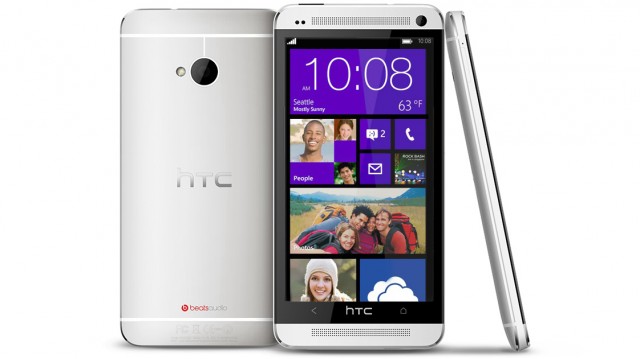 On his seemingly endless farewell tour, Microsoft CEO Steve Ballmer can cross another one off the list: His final letter to shareholders as the leader of the software giant.
On his seemingly endless farewell tour, Microsoft CEO Steve Ballmer can cross another one off the list: His final letter to shareholders as the leader of the software giant.
But, unlike this emotional goodbye to the employees of Microsoft two weeks ago, Ballmer’s letter in the 2012 annual report was largely devoid of the same genuine verve or vigor.
In fact, it was a classic box-checker of a missive. Consider (with my asides):
“Fiscal Year 2013 was a pivotal year for Microsoft in every sense of the word.” (You can say that again.)
“We are still in the early days of our transformation, yet we made strong progress in the past year launching devices and services that people love and businesses need.” (Jury=Out.)
“What is a high-value activity? Think of the experiences people have every day that are most important to them — from communicating with a family member and researching a term paper to having serious fun and expressing ideas.” (Every time a new buzzword is declared a consultant gets his fee.)
“[The new organizational restructuring] ensures we have one strategy and work as one team with one set of shared goals.” (Apparently, there can be only One Microsoft.)
“This framework was designed to give valuable insight into our progress in the key transformations we are undertaking in our businesses to drive long-term growth.” (I have no idea what this sentence means in any way, but it sounds impressive.)
“We have seen incredible results in the past decade — delivering more than $200 billion in operating profit. I’m optimistic not only as the CEO but as an investor who treasures his Microsoft stock.” (I have shown you the money, so why won’t Wall Street show me the stock love?)
“Working at Microsoft has been a thrilling experience — we’ve changed the world and delivered record-setting success — and I know our best days are still ahead.” (Elvis has left the building. Sort of. Soon. I promise by Thanksgiving. Ok, maybe by Christmas. I think.)
Here’s the whole thing:
TO OUR SHAREHOLDERS, CUSTOMERS, PARTNERS AND EMPLOYEES:
This is a unique letter for me — the last shareholder letter I will write as the CEO of the company I love. We have always believed that technology will unleash human potential and that is why I have come to work every day with a heart full of passion for more than 30 years.
Fiscal Year 2013 was a pivotal year for Microsoft in every sense of the word.
Last year in my letter to you I declared a fundamental shift in our business to a devices and services company. This transformation impacts how we run the company, how we develop new experiences, and how we take products to market for both consumers and businesses.
This past year we took the first big bold steps forward in our transformation and we did it while growing revenue to $77.8 billion (up 6 percent). In addition, we returned $12.3 billion (up 15 percent) to shareholders through dividends and stock repurchases. While we were able to grow revenue to a record level, our earnings results reflect investments as well as some of the challenges of undertaking a transformation of this magnitude.
With this as backdrop, I’d like to summarize where we are now and where we’re headed, because it helps explain why I’m so enthusiastic about the opportunity ahead.
Our strategy: High-value activities enabled by a family of devices and services
We are still in the early days of our transformation, yet we made strong progress in the past year launching devices and services that people love and businesses need. We brought Windows 8 to the world; we brought consistent user experiences to PCs, tablets, phones and Xbox; and we made important advancements to Windows Server, Windows Azure, Microsoft Dynamics and Office 365. We are proud of what we accomplished this year and continue to be passionate about delivering better devices and services more quickly.
To increase innovation, capability, efficiency and speed we further sharpened our strategy, and in July 2013 we announced we are rallying behind a single strategy as One Microsoft. We declared that Microsoft’s focus going forward will be to create a family of devices and services for individuals and businesses that empower people around the globe at home, at work and on the go, for the activities they value most.
Over time, our focus on high-value activities will generate amazing innovation and new areas of growth. What is a high-value activity? Think of the experiences people have every day that are most important to them — from communicating with a family member and researching a term paper to having serious fun and expressing ideas. In a business setting, high-value activities include experiences such as conducting meetings with colleagues in multiple locations, gaining insight from massive amounts of data and information, and interacting with customers.
Microsoft will enable these types of high-value activities with a family of devices — from both Microsoft and our partners — as well as with our services.
As we go to market, we will primarily monetize our high-value activities by leading with devices and enterprise services. In this model, our consumer services such as Bing and Skype will differentiate our devices and serve as an on-ramp to our enterprise services while generating some revenue from subscriptions and advertising. Enterprise services continue to be an area of great strength, growth and opportunity as businesses of all sizes look to Microsoft to help them move to the cloud, manage a growing number of devices, tap into big data and embrace new social capabilities.
Executing and accelerating
In the past year we took many bold steps forward in executing on our strategy.
First, we are well underway in implementing the new organization structure announced in July. The teams are working together in new and exciting ways. The key change we made is deceptively simple but profoundly powerful: Instead of organizing our teams around individual products, we’ve organized by function, including, for example, engineering, sales, marketing and finance. It ensures we have one strategy and work as one team with one set of shared goals.
Second, in September we announced we are purchasing Nokia’s Devices and Services business — including its smartphone and mobile phone businesses; award-winning engineering and design teams; manufacturing and assembly facilities around the world; and teams devoted to operations, sales, marketing and support. This is a signature event in our transformation and will bring together the best mobile device work of Microsoft and Nokia. It will accelerate our growth with Windows Phone while strengthening our overall device ecosystem and our opportunity.
Third, in September, we also announced a new segment-reporting framework. We have five new reporting segments tightly aligned with our focus on delivering innovative devices and services for both our enterprise and consumer customers. This framework was designed to give valuable insight into our progress in the key transformations we are undertaking in our businesses to drive long-term growth.
As I think about what’s ahead, I’m incredibly optimistic about what Microsoft will deliver. We are accelerating as we bring to market Windows 8.1 PCs and tablets with our partners, Surface 2, Xbox One and new phones; advance our enterprise services including Windows Server, Windows Azure, Microsoft Dynamics and Office 365; and innovate on new high-value activities.
Moving forward
With the decisions we’ve made this year, the strategy we’ve put in place, the organization we’ve designed, the world-class talent we have, and the devices and services we are creating, we are well-positioned to deliver growth and world-changing technology long into the future.
We have seen incredible results in the past decade — delivering more than $200 billion in operating profit. I’m optimistic not only as the CEO but as an investor who treasures his Microsoft stock.
Working at Microsoft has been a thrilling experience — we’ve changed the world and delivered record-setting success — and I know our best days are still ahead.
Thank you for your support.
Steven A. Ballmer
Chief Executive Officer
September 27, 2013













